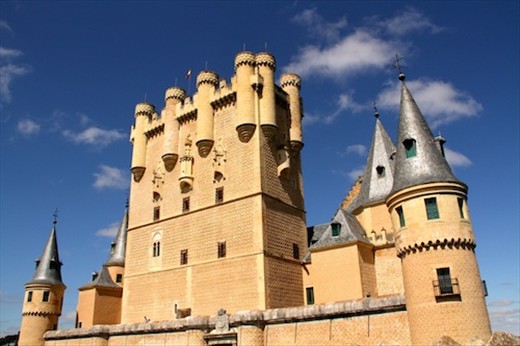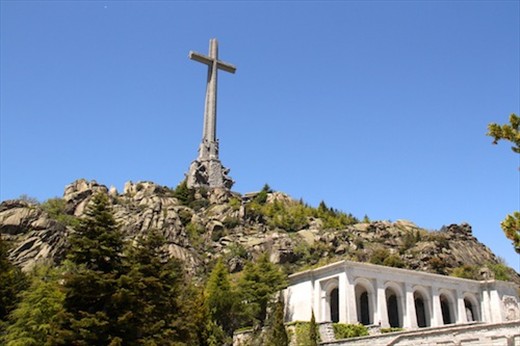"You can't judge a book by its cover." That applies to the alcazar at Segovia and the walled city of Avila.

Fairytale castle at Segovia
Segovia's Disney-esque castle perches on a cliff, but it is a 19th Century re-creation. The real draw at Segovia is the Roman aquaduct. Built just after Julius Caesar's time, it was in use well into the 1800s. Once it carried water nine miles to the castle with a constant pitch of one degree. Several hundred meters of the aquaduct remain in pristine conditio, some sections 100 feet high. Those Romans sure knew how to build stuff!

Avila at night (archival photo)
The walls of Avila are much newer, dating from the time of the Reconquista. At nearly three kilometers in length with 87 towers and nine gates it is the largest enclosed structure in the world. Though they stand tall today, there isn'm much to recommend the town inside.

Valley of the Fallens
The Valley of the Fallen was another bit of disappointment. The underground cathedral would be the longest in the world except that the Vatican consecrated only enough of it to keep it in second place to St. Peter's Basilica. It was commissioned by Franco to honor those who died in the Spanish Civil War. But he used prisioners from the conflict for labor. And there is no mention of the war itself, its causes or effects. It is almost as if the Civil War, like the Inquisition, never happened.